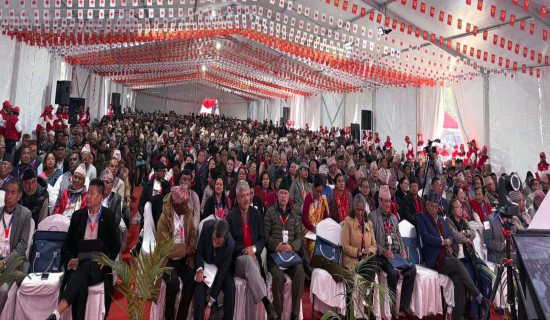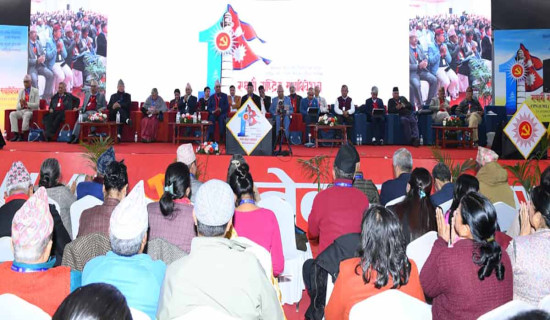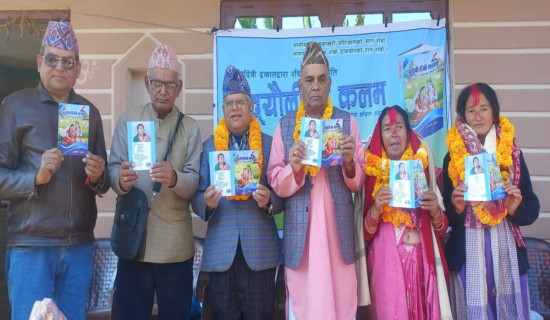- Sunday, 14 December 2025
Climate change poses threat to rhino survival
By Basanta Parajuli
Narayangadh, Nov. 6: The effects of climate change are directly impacting rhino populations. Extreme weather patterns, including heavy rainfall and drought, disrupt biodiversity and create challenges for wildlife, experts warned.
Dr. Ganesh Pant, Chief Conservation Officer at Chitwan National Park (CNP), said that climate change could significantly shrink rhino habitats within 50 years.
“Only 2 per cent of Nepal’s land is currently suitable for rhino habitat and this area could decrease by more than 30 per cent in the next 50 years,” he explained. Dr. Pant said that excessive rainfall leads to flooding, while drought depletes water sources, creating water shortages for wildlife within protected areas.
In 2017, a flood in the Narayani River washed 13 rhinos into India, out of which nine were rescued from India and four were saved when they returned to Triveni in Nepal, according to CNP.
The CNP, situated near large rivers like Narayani and Rapti, faces flooding each year, yet there is no exact data on how many rhinos are displaced. Park officials have expressed concern that India has begun to conserve the rhinos that are swept across the border during floods, making it difficult to rescue and bring them back to Nepal. As a result, exact data on these displaced rhinos is unavailable, park authorities said.
“Protected ponds and wallowing sites for rhinos are at risk of disappearing if temperatures keep rising as they are,” he said. CNP, home to Nepal’s largest rhino population, has over 100 small ponds and marshes, with more than half drying up in winter.
According to Dr. Pant’s study, rising temperatures over the next five decades could dry up all these water bodies. Such changes threaten Nepal’s iconic rhino species, making it urgent to address this issue now.
“Big animals like tigers and elephants can survive in Chure and Mahabharat hills if their habitats face threats, but rhinos have no alternative,” he said. While extinction is not imminent within 50 years, habitat loss could have severe consequences unless efforts to adapt and preserve habitats are taken seriously, he added.
The effects of climate change increase rhino mortality rates and reduce their habitat. Key challenges include managing habitats and mitigating flood damage. Finding sustainable methods to protect rhinos is essential, Dr. Pant stressed.
Dr. Baburam Lamichhane, Chief of Biodiversity at the USAID Water and Jungle Programme, suggested a low-impact strategy to safeguard rhinos from climate change. He proposed constructing small artificial mounds to provide safe refuge during floods, similar to the practice in India’s Kaziranga National Park, where rhinos are protected from Brahmaputra River flooding.
The western regions of CNP face higher rhino densities than the eastern areas. Recent surveys counted 694 rhinos in Chitwan, with 38 in Bardiya, 17 in Shuklaphanta and three in Parsa.
“Relocating western rhinos to the east and monitoring them with radio collars could reduce flood-related losses,” Dr. Pant recommended. Potential new habitats like Koshi Tappu Wildlife Reserve could also be developed, as two rhinos from Chitwan have already been relocated there.
Senior ecologist Hari Bhadra Acharya at the Department of National Parks and Wildlife Conservation confirmed that their current rhino conservation plans focus on mitigating climate change impacts on biodiversity.
“Our programmes are designed to address the impacts of climate change on biodiversity,” he said, affirming the commitment to safeguarding Nepal’s iconic rhino populations against climate threats.














